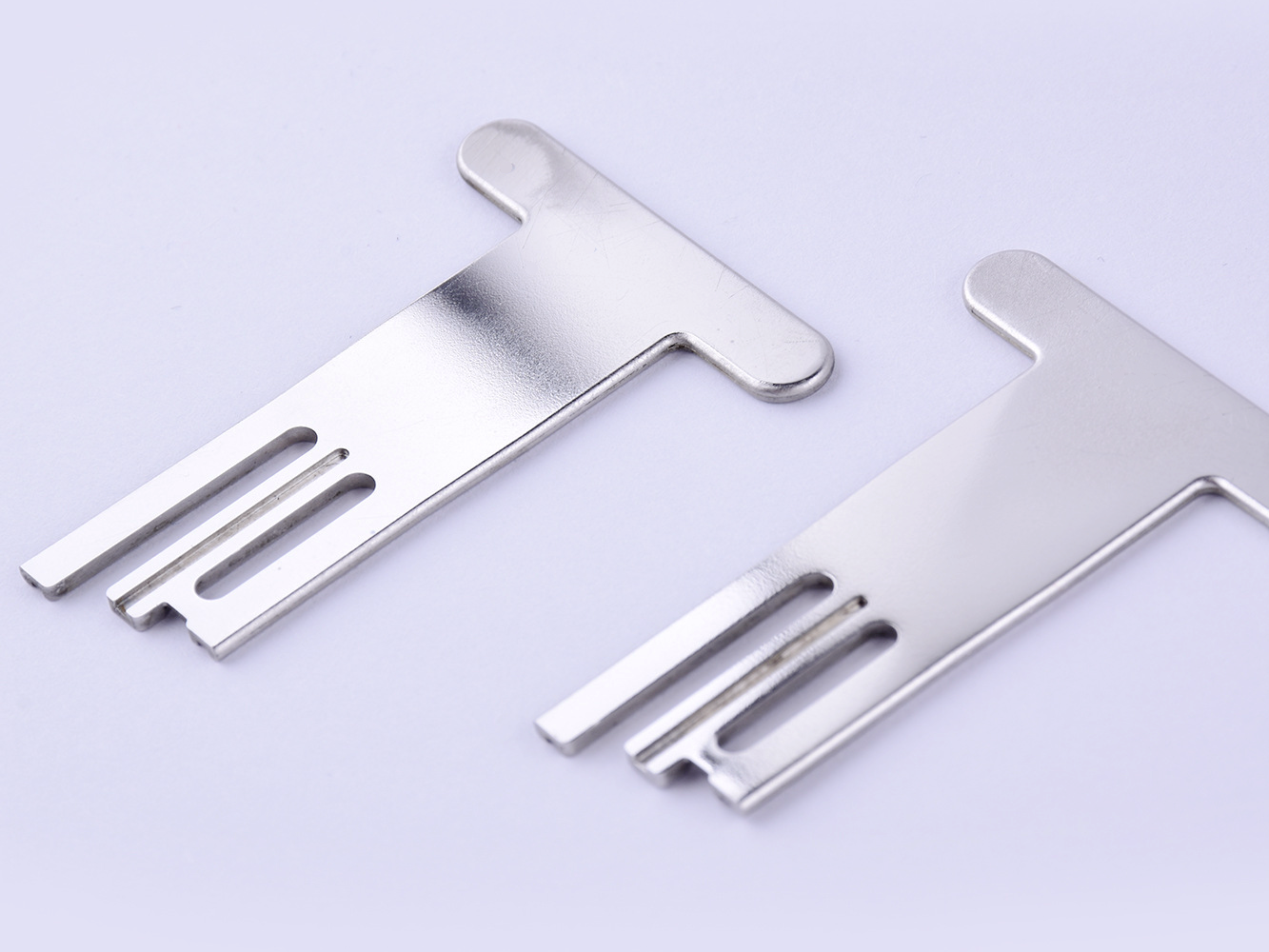Electropolishing: A Process That Improves CNC Part Smoothness and Durability
Introduction
Electropolishing is an advanced electrochemical finishing technique extensively utilized to improve the surface smoothness and durability of CNC machined components. This process produces a highly reflective, ultra-smooth finish typically ranging from 5–40 µm material removal by selectively dissolving microscopic peaks from metal surfaces through controlled electrolysis. It significantly enhances corrosion resistance, mechanical performance, and cleanliness.
Ideal for critical industries such as medical devices, aerospace, and semiconductor manufacturing, electropolishing effectively treats intricate CNC geometries, including thin-walled structures, microchannels, and precision threads, delivering superior surface quality and reliability.
Electropolishing Technology: Advanced Surface Refinement for Enhanced Performance
Scientific Principles & Industrial Standards
Definition: Electropolishing is an electrochemical finishing method where metal surfaces undergo controlled anodic dissolution in an electrolytic bath, resulting in a highly smooth, bright, and corrosion-resistant surface. Typical metal removal is precisely controlled, usually between 5–40 µm.
Governing Standards:
ASTM B912: Standard specification for electropolishing stainless steel alloys
ISO 15730: Metallic and other inorganic coatings – Electropolishing
ASTM E1558: Standard guide for electropolishing titanium and alloys
Process Function and Cases
Performance Dimension | Technical Parameters | Application Cases |
|---|---|---|
Surface Smoothness | - Surface roughness: Ra ≤ 0.1 µm achievable - Uniformity across complex shapes | Medical implants, Semiconductor wafer chambers, Pharmaceutical valves |
Corrosion Resistance | - Salt spray resistance: ≥1,500 hours (ASTM B117) - Passive oxide layer enhancement | Surgical instruments, Marine fittings, Aerospace fasteners |
Cleanability & Sterility | - Surface cleanliness: ISO Class 1 particle-free - Reduced bacterial adhesion | Food processing equipment, Cleanroom fittings, Biopharmaceutical equipment |
Mechanical & Fatigue Performance | - Reduced surface stress concentrations - Fatigue life improvement: up to 30% | Aerospace turbine blades, Automotive suspension components, High-performance gears |
Electropolishing Process Classification
Technical Specification Matrix
Electropolishing Method | Key Parameters & Metrics | Advantages | Limitations |
|---|---|---|---|
Standard Electropolishing (Bath Method) | - Voltage: 6–18 V DC - Temperature: 40–70°C - Removal rate: 5–20 µm/min | - Excellent surface finish - Superior corrosion resistance - Efficient bulk processing | - Bath maintenance required - Limited depth control |
Pulse Electropolishing | - Voltage Pulses: 5–20 V, duty cycle 20–80% - Removal rate: 1–15 µm/min | - Precise surface control - Uniform finish on micro-features - Reduced electrolyte consumption | - Higher equipment complexity |
Localized Electropolishing | - Voltage: 5–15 V DC - Spot treatment capability | - High precision on specific areas - Ideal for repair and targeted polishing | - Slower processing speed |
Dry Electropolishing (Environmentally Friendly) | - Voltage: 10–20 V - Electrolyte-free polishing | - Minimal environmental impact - Lower maintenance - Suitable for sensitive applications | - Limited to specialized applications - High initial investment |
Selection Criteria & Optimization Guidelines
Standard Electropolishing (Bath Method)
Selection Criteria: Optimal for CNC parts requiring uniform finish, corrosion resistance, and batch processing efficiency (medical, food, and semiconductor industries).
Optimization Guidelines:
Maintain electrolyte temperature at 50–60°C
Regular bath composition monitoring to maintain optimal polishing quality
Consistent electrical parameters (current density: 5–50 A/dm²) to ensure even metal removal
Pulse Electropolishing
Selection Criteria: Preferred for intricate CNC parts requiring precise dimensional control and minimal feature distortion (aerospace, precision micro-components).
Optimization Guidelines:
Adjust pulse frequencies and duty cycles to refine surface features
Maintain tight voltage control ±0.5 V accuracy
Ensure high electrolyte purity to enhance finish uniformity
Localized Electropolishing
Selection Criteria: Ideal for high-value CNC components needing targeted polishing, spot repairs, or fine detailing (aerospace repairs, precision molds).
Optimization Guidelines:
Utilize precision electrode positioning
Maintain low voltage for minimal heat generation
Perform detailed inspection post-process
Dry Electropolishing (Environmentally Friendly)
Selection Criteria: Ideal for eco-sensitive applications demanding minimal environmental impact and high cleanliness standards (electronics, medical implants).
Optimization Guidelines:
Ensure consistent electrode gap
Maintain strict voltage control
Implement real-time monitoring to optimize finish quality
Material-Coating Compatibility Chart
Substrate | Recommended Electropolishing Method | Performance Gain | Industrial Validation Data |
|---|---|---|---|
Standard Electropolishing | Improved corrosion resistance | Passed 2,000-hour salt spray (medical device validation) | |
Pulse Electropolishing | Enhanced biocompatibility | FDA-certified orthopedic implants | |
Localized Electropolishing | High precision surface finishing | Aerospace component dimensional accuracy verification | |
Standard Electropolishing | Enhanced conductivity & aesthetics | Semiconductor cooling systems validated for thermal performance | |
Pulse Electropolishing | Reduced surface stress concentrations | Aerospace turbine blades validated with extended fatigue life |
Electropolishing Process Control: Critical Steps & Standards
Pre-Treatment Essentials
Chemical Cleaning: Degreasing with alkaline solution, ultrasonic agitation at 50°C Validation: Water-break test (ASTM F22)
Electrolyte Composition Control: Regular monitoring and replenishment Validation: Electrolyte density/conductivity testing
Electropolishing Process Controls
Voltage and Current Regulation: DC rectifiers with ±1% accuracy Validation: Real-time digital monitoring
Temperature Control: Thermostatically controlled baths within ±2°C Validation: Continuous digital data logging
Post-Coating Enhancement
Rinsing and Drying: Ultra-pure water rinse followed by controlled drying Validation: Surface residue testing (ASTM F22)
Surface Finish Inspection: Precision surface roughness measurement (Ra ≤ 0.1 µm) Validation: ISO 25178 standards compliance
FAQs
How does electropolishing compare with mechanical polishing in terms of surface quality?
What metals and alloys are best suited for electropolishing?
Can electropolishing process intricate features like threads or thin walls effectively?
Is electropolishing suitable for CNC parts in the medical and food industry?
How does electropolishing impact the fatigue life of CNC machined components?

